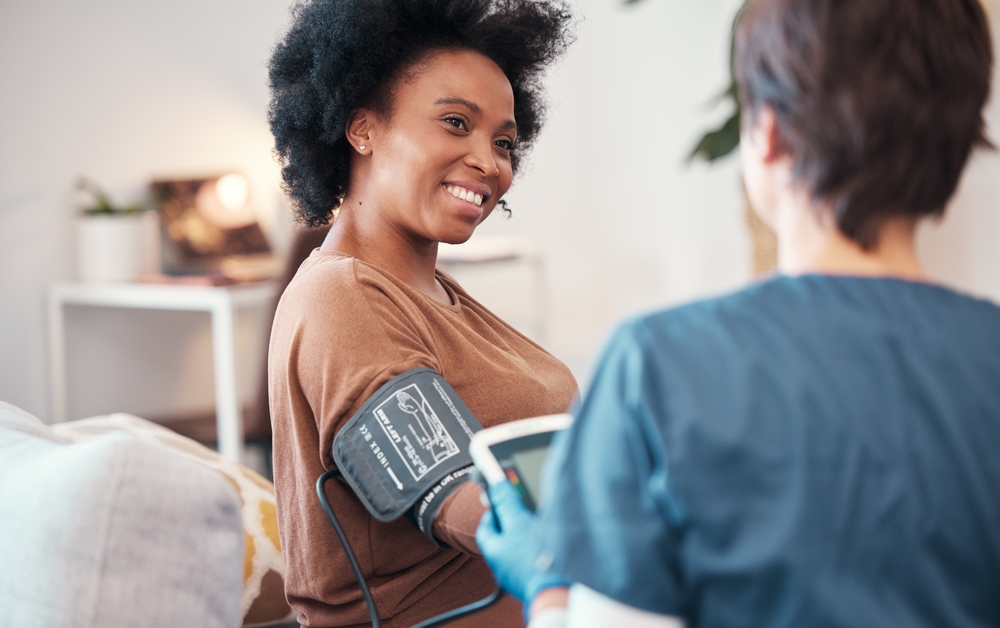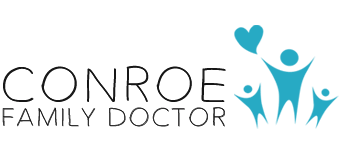
Monitoring Blood Pressure at Home
High blood pressure, or hypertension, is a serious health concern that requires proactive management to prevent long-term complications. Monitoring blood pressure at home is a vital step in understanding and controlling this condition. Dr. Trang Nguyen of Conroe Family Doctor in Conroe, TX, emphasizes the importance of regular home monitoring to complement clinical care and improve health outcomes.
Why Monitoring Blood Pressure at Home Is Important
Home blood pressure monitoring provides a clearer picture of your cardiovascular health outside the doctor’s office. Blood pressure readings taken in a clinical setting can sometimes be influenced by anxiety or stress, commonly known as “white coat syndrome.” Home measurements offer more accurate insights into your daily blood pressure trends.
Regular monitoring also helps detect early warning signs of hypertension or fluctuations that might require immediate attention. By tracking these changes, patients can work closely with their healthcare provider to adjust treatment plans or make lifestyle changes as needed. For those already managing hypertension, home monitoring ensures the effectiveness of medications and other interventions.
Choosing the Right Blood Pressure Monitor
Selecting a reliable blood pressure monitor is crucial for obtaining accurate readings. There are various types of monitors available, including manual and digital devices. Most patients prefer digital monitors for their ease of use and ability to store multiple readings for review.
When choosing a monitor, it is essential to consider factors like cuff size, user-friendliness, and accuracy. Monitors with an arm cuff are generally recommended over wrist or finger monitors, as they tend to provide more reliable results. Consulting with your healthcare provider can help you select a monitor that suits your specific needs.
Calibration is another important aspect to ensure accuracy. Regularly calibrating your device according to the manufacturer’s instructions or through professional services ensures the readings remain consistent over time.
How to Take Accurate Readings
Proper technique is key to obtaining accurate blood pressure measurements. Begin by preparing a quiet and comfortable space where you can sit without distractions. Avoid consuming caffeine, smoking, or exercising at least 30 minutes before taking a reading, as these can temporarily elevate blood pressure levels.
Sit with your back supported, feet flat on the ground, and your arm resting on a flat surface at heart level. Place the cuff securely on your bare upper arm, following the instructions provided with your monitor. It is recommended to take two to three readings a minute apart and record the average for a more accurate assessment.
Consistency in timing is equally important. Taking measurements at the same time each day, such as in the morning and evening, helps track patterns and provides a comprehensive view of your blood pressure trends.
Understanding and Recording Your Results
Interpreting blood pressure readings involves understanding two key numbers: systolic and diastolic pressure. Systolic pressure measures the force of blood against artery walls during heartbeats, while diastolic pressure measures the same force between beats. A normal reading is typically around 120/80 mmHg, but your target range may vary based on individual health factors.
Keeping a log of your readings is essential for effective monitoring. Many digital monitors store data, but manually recording your results in a notebook or app can provide additional context, such as notes on diet, activity, or stress levels at the time of measurement. Sharing this log with your healthcare provider during checkups ensures better-informed decisions about your treatment plan.
Combining Home Monitoring with Professional Care
While home monitoring is a valuable tool, it should not replace regular visits to your healthcare provider. Clinical assessments provide a broader understanding of your cardiovascular health and help identify any underlying conditions contributing to high blood pressure.
Dr. Trang Nguyen recommends combining home readings with periodic in-office measurements to verify accuracy and gain a holistic view of your blood pressure management. These visits also provide an opportunity to discuss any concerns, adjust medications, or receive guidance on improving lifestyle habits.
Overcoming Challenges in Home Monitoring
Many patients encounter challenges when starting home blood pressure monitoring, such as difficulty operating the device or interpreting results. Taking the time to familiarize yourself with your monitor and its features can alleviate these concerns. Most manufacturers provide detailed instructions and customer support for troubleshooting.
Another common challenge is maintaining consistency in monitoring routines. Setting reminders or integrating the task into your daily schedule can help establish a habit. Involving family members or caregivers in the process may also provide support and accountability.
The Role of Lifestyle in Blood Pressure Control
Home monitoring works best when combined with healthy lifestyle changes. A balanced diet, regular exercise, stress management, and adequate sleep all contribute to better blood pressure control. These habits not only support the effectiveness of medications but can also reduce the need for additional interventions.
For example, maintaining a low-sodium diet and increasing potassium intake can significantly impact blood pressure levels. Regular physical activity strengthens the heart and improves circulation, while stress management techniques like meditation or deep breathing exercises help lower blood pressure naturally.
Empowering Patients Through Knowledge
Monitoring blood pressure at home empowers patients to take an active role in managing their health. Understanding your readings, recognizing patterns, and knowing when to seek professional care are vital steps in preventing complications and achieving better outcomes. Dr. Trang Nguyen and the team at Conroe Family Doctor are dedicated to providing the education and support needed to navigate this journey.
By integrating home monitoring into your daily routine, you can stay informed about your cardiovascular health and make proactive decisions to protect your well-being. With the right tools, techniques, and guidance, managing blood pressure becomes a manageable and effective process.
Sources:
- Pickering, T. G., Miller, N. H., Ogedegbe, G., Krakoff, L. R., Artinian, N. T., & Goff, D. (2008). Call to action on use and reimbursement for home blood pressure monitoring: Executive summary. Hypertension.
- Whelton, P. K., Carey, R. M., Aronow, W. S., Casey, D. E., Collins, K. J., Dennison Himmelfarb, C., … & Wright, J. T. (2018). 2017 ACC/AHA/AAPA/ABC/ACPM/AGS/APhA/ASH/ASPC/NMA/PCNA guideline for the prevention, detection, evaluation, and management of high blood pressure in adults. Journal of the American College of Cardiology.
- Stergiou, G. S., Palatini, P., Parati, G., O’Brien, E., & Januszewicz, A. (2021). Home blood pressure monitoring in the 21st century. Journal of Hypertension.


